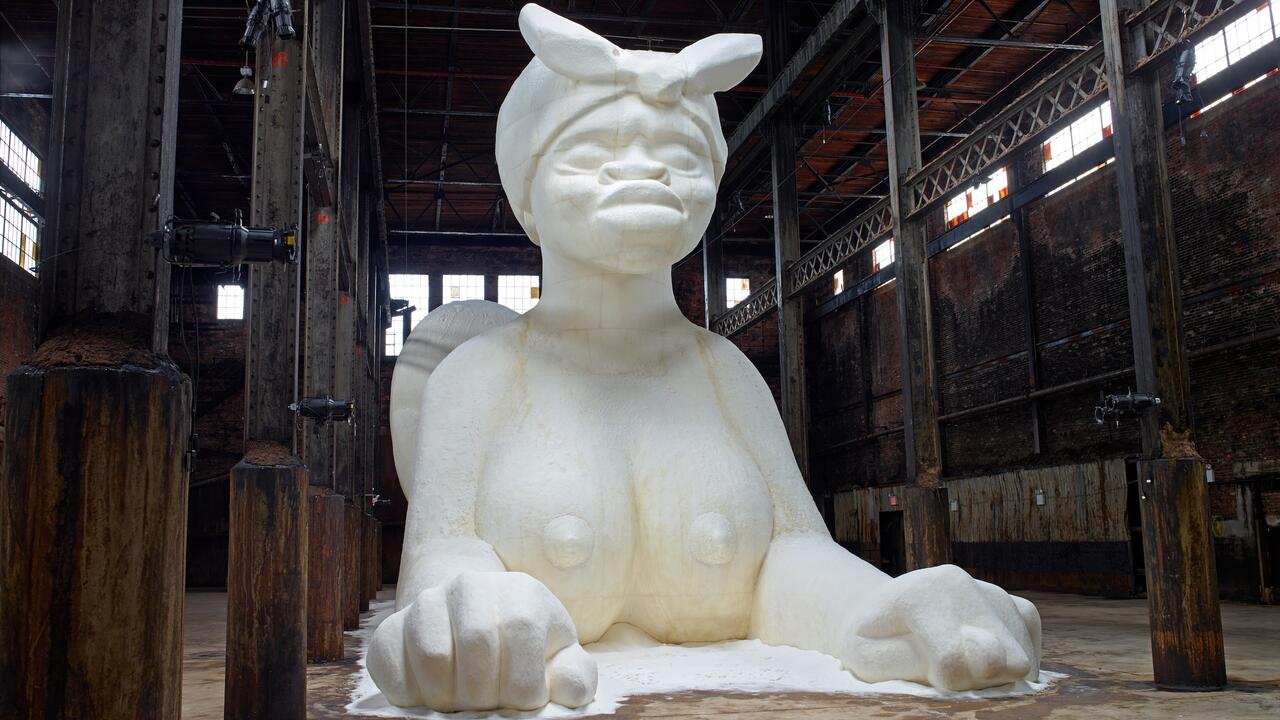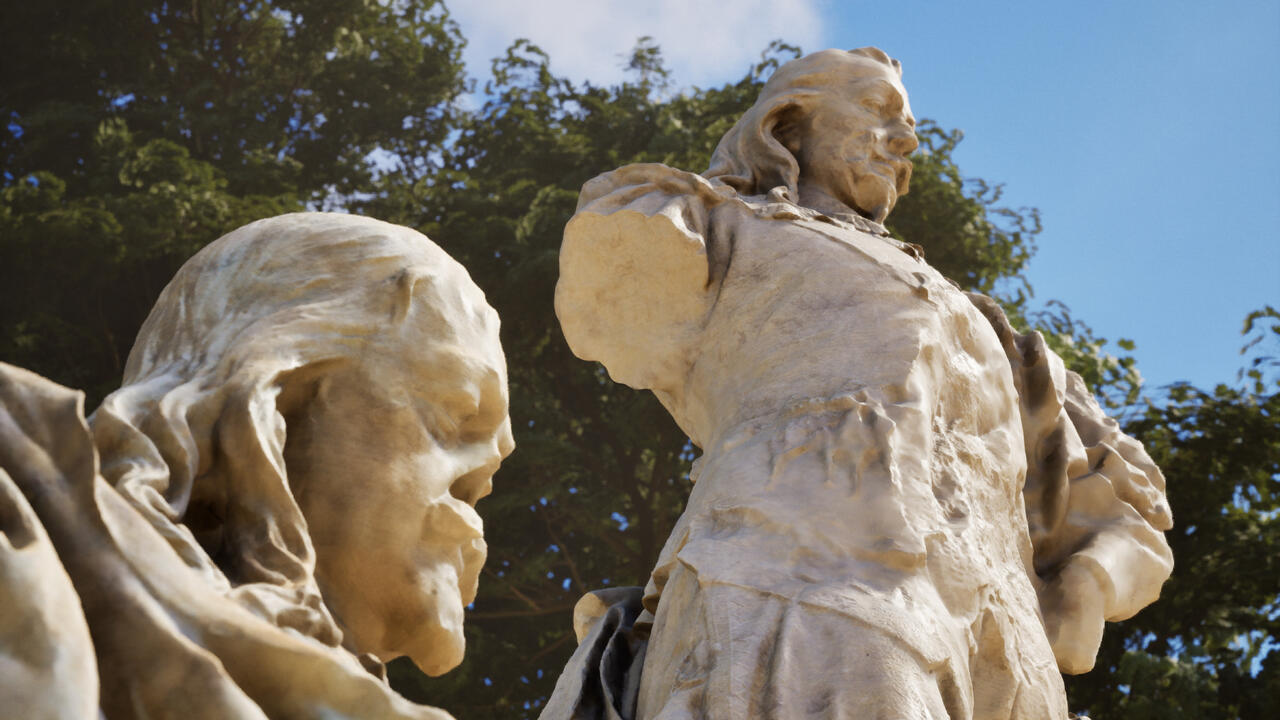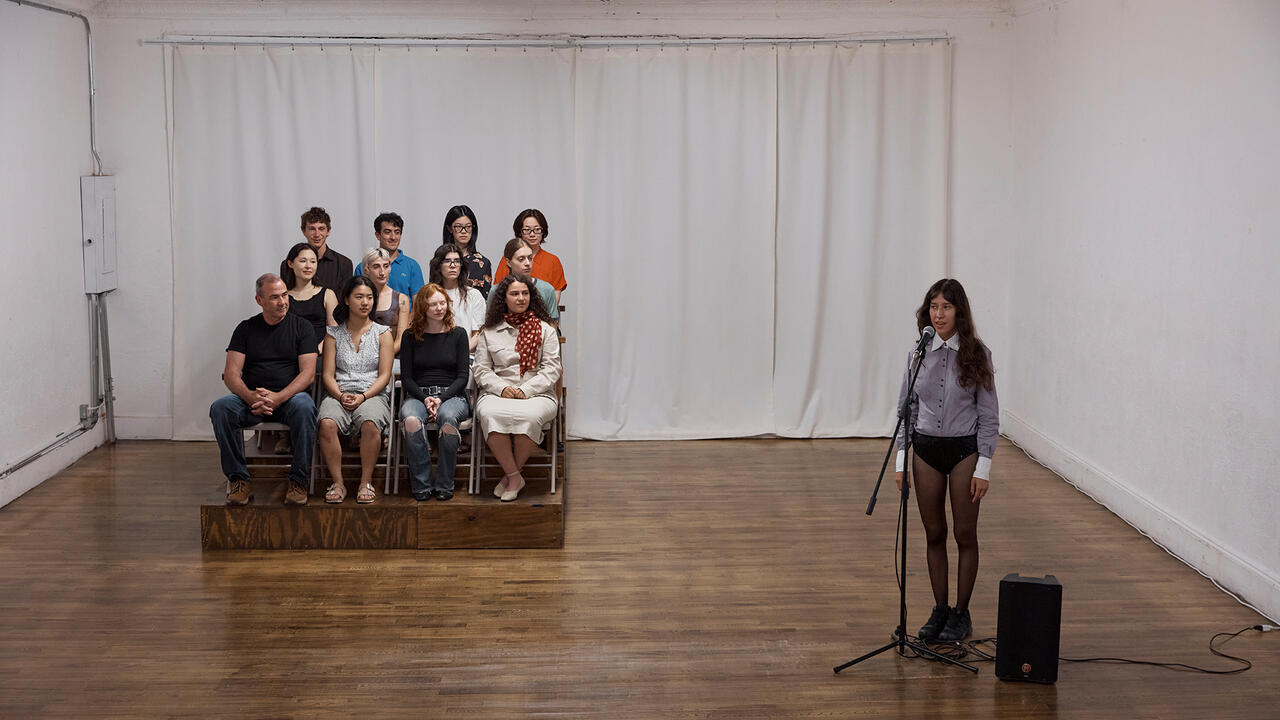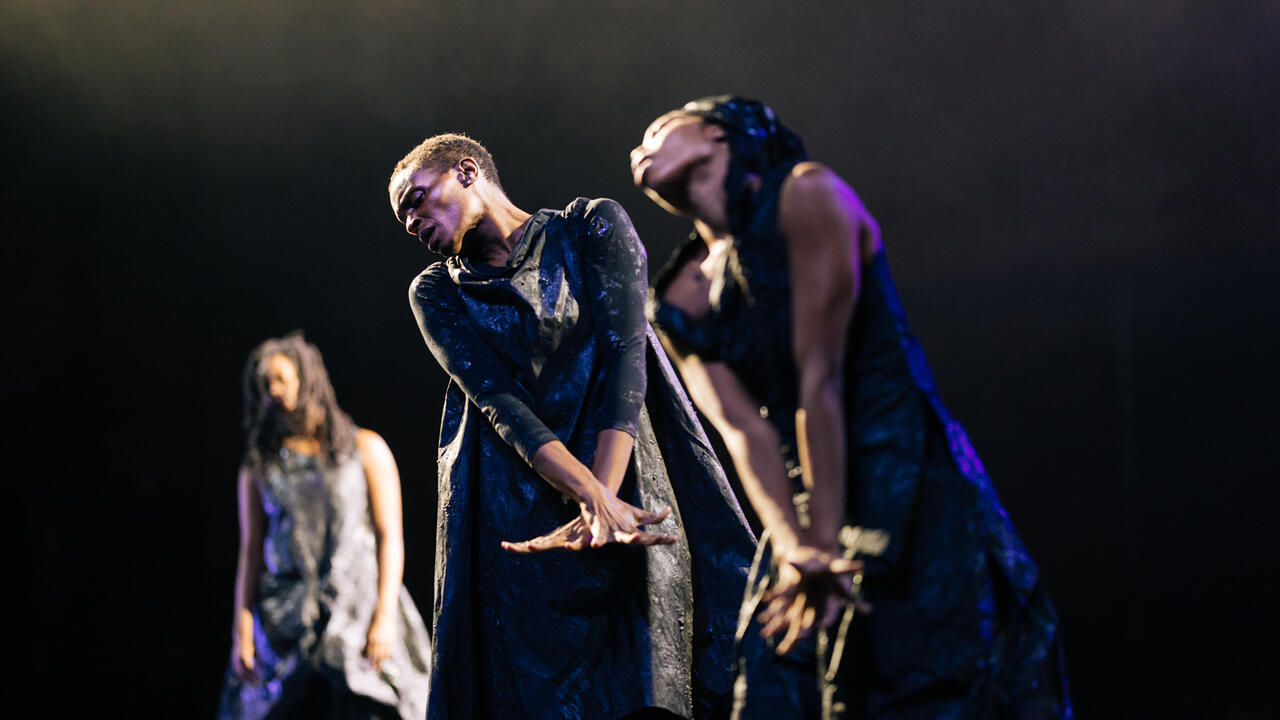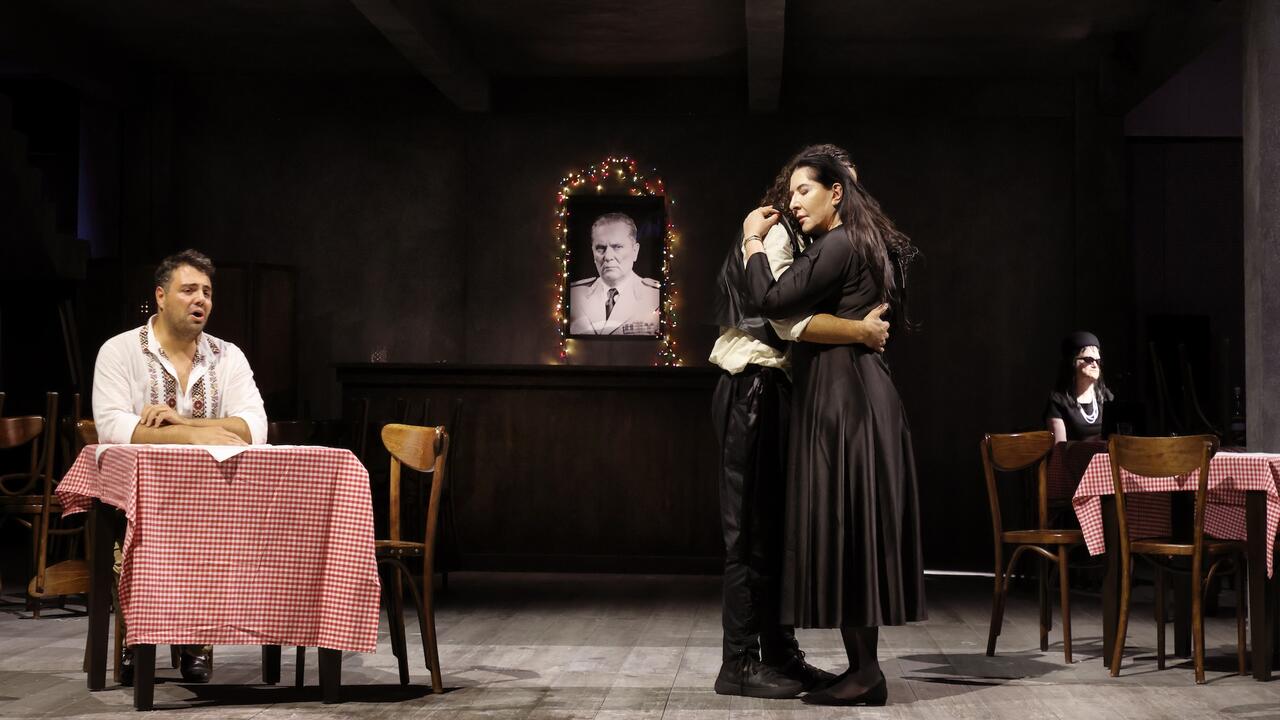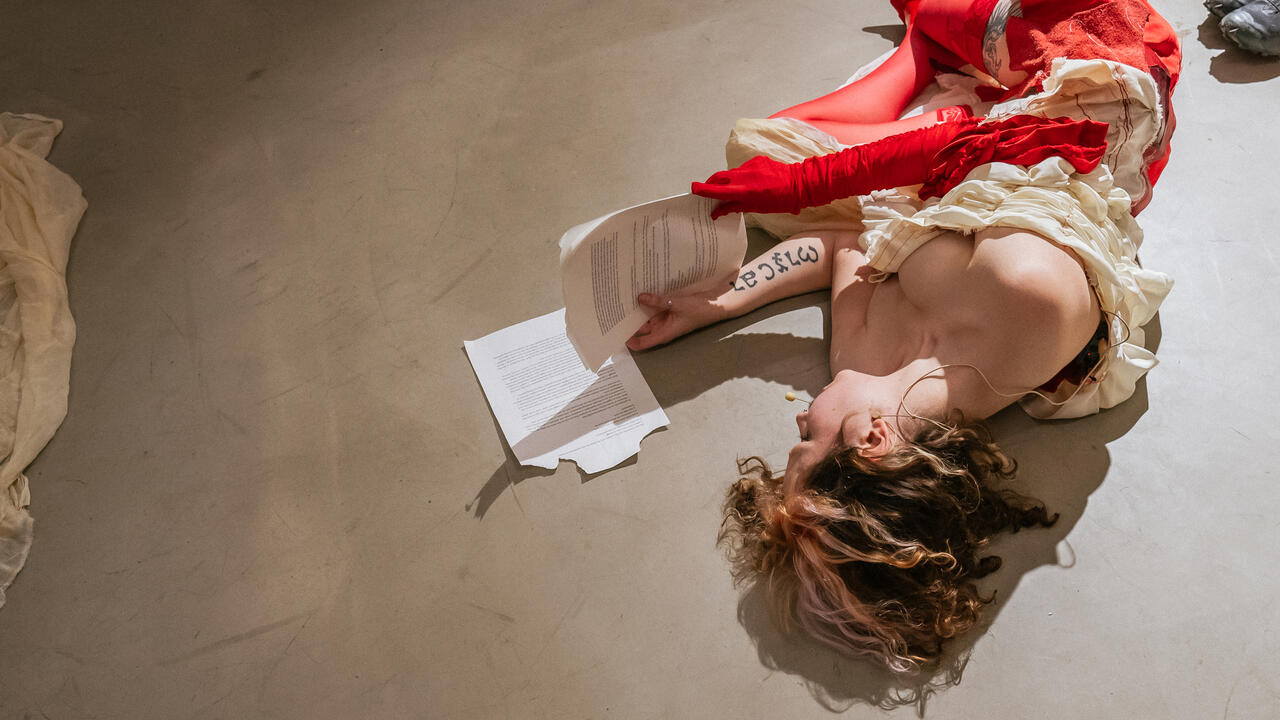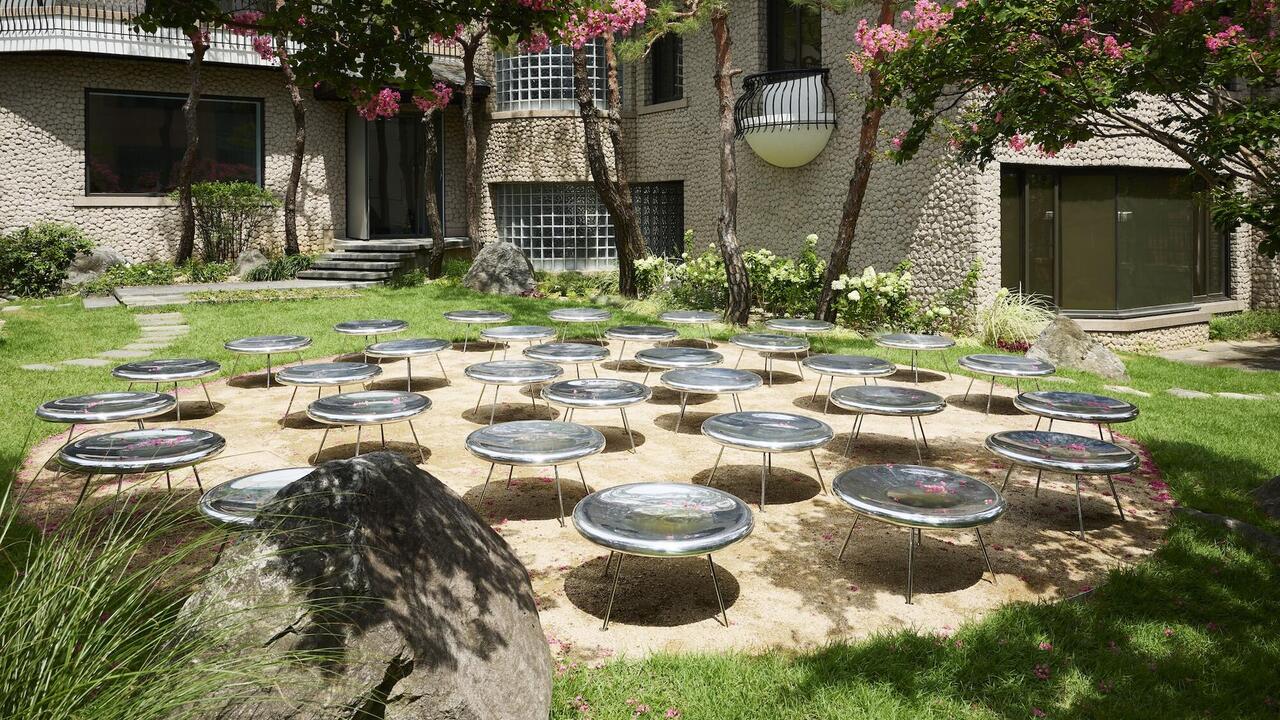Work for Nothing
Pablo Larios on the versatile performances of Anne Imhof
Pablo Larios on the versatile performances of Anne Imhof

Let’s start really macro. Where does culture per se originate these days? Is it hatched in clubs, within boardrooms, in advertising agencies, on Netflix, on the bus home, at the gym, on Instagram, in magazines such as this one? Is it culled from sweatshirt-wearing young people in Bed-Stuy or in Palo Alto, grown in mason jars, spotted by ‘coolhunters’, aggregated from William Gibson’s Twitter account, housed at museums, in artists’ studios or all of the above? And does culture happen online, in gentrified neighbourhoods purged of ‘authenticity’ or is it outsourced to, and imported from, globalized regions of exploitation, violence and precarity? Is culture an insider’s game or something we all do? It has become hard to distinguish norm from deviation, exception from rule. There is not – and never was – a ‘prime mover’ of culture, but hybridizations of cultural forms have become strangely fluid of late. Suddenly, Wolfgang Tillmans is walking down the runway during New York Fashion Week wearing Hood by Air. It is as though ‘appropriation’ – long an operating principle of contemporary art – no longer constitues a clear-cut relationship between ‘high’ and ‘low’, general and niche, but an increasingly confusing and contradictory back and forth. Maybe the term ‘appropriation’ needs a revision, especially in the context of a ‘sharing economy’, in the wake of which most things don’t ‘properly’ belong to anyone.
In Anne Imhof’s performances, hybridizations between cultural forms are especially pronounced. The Frankfurt-based artist began her practice in painting, but has since migrated to staging performances alongside installations of her paintings and sculptures. Itself an example of an entangling of cultural wires, Imhof’s art draws from musical cultures like metal or techno, from choreographers such as William Forsythe, from commercial photography, from fashion and from recent technology. Her universe is a large, loosely scripted one in which an almost tribe-like configuration of friends text one another in the exhibition space or just hang out. These works are defiantly ‘cool’: they look good, bodies are svelte and muscular, and the performers’ movements are as emotionally invasive as they are physically aloof. They do not reward piecemeal viewership but ask for long stretches of your time, filling the hours with high drama, operatic pathos and lots of nothingness. At the core of Imhof’s practice is a particular, constructed atmosphere: youthful, mobile, half-staged but mostly seeming ‘real’, filled with familiar visual cues and commodities – Adidas, fizzy drinks, iPhones – that once promised identification but have ceased to deliver it. Unlike, for example, Tino Sehgal’s ‘situations’, Imhof’s performances are macro: generalizing and epic (not in the Brechtian sense, but as in drone music). They involve viewers in a sludgy human process that gets you to space out for a while and then draws your attention toward an activity that is vague and archetypal, which dares to be boring until it suddenly frightens you with dramatic and compelling flares of human motion.

But perhaps my mind is wandering a bit. It is nearly midnight and I am at rehearsals for Imhof’s Angst II, her new, four-hour ‘opera’ that follows on from this summer’s Angst at Kunsthalle Basel. (Angst II was commissioned as part of Imhof being awarded Berlin’s National Gallery Prize in 2015; Angst III is being staged at this year’s Biennale de Montréal.) At night, the huge hall of the Hamburger Bahnhof, unevenly lit, is filled with blueish smoke, which weaves through the building’s colonnades. Punctuating the space are white spiral staircases that lead nowhere, as if this were a staged club scene, or perhaps they are watchtowers from The Hunger Games (2008–10). On two elevated platforms near the entrance are a dozen or so people in their 20s who seem to be squatting the museum. Sitting around on mattress toppers or tangled in sleeping bags, they do not talk to one another but eat crackers and drink Diet Coke, looking vacant and disengaged. At a certain point, these people wander off into the smoke. One of them takes a live hawk on her large leather glove, another walks a tightrope. Somewhat too dramatically, a drone comes flying through the smoke. Just as in everyday life, it is hard to distinguish rehearsal from performance here, and the first thing I wonder is: am I front- or backstage?
In the past, Imhof has used animals – mules, turtles, falcons – and perishables like buttermilk, but the one consistent element of her performances is the group of friends she works with, some of whom have professional dance training, while others are compellingly amateurish. The surface appeal of Imhof’s performances – using models and dancers, looking ‘hip’ – may be alienating to some viewers because it is defiantly partial and not (like Sehgal’s) deliberately ‘universal’. Some performers are androgynous, often their heads are shaved, and most dress in the casual sportswear and trainers that have become fashionable in recent years. In the performances, they repeat basic everyday actions (kneeling, walking, sitting, running, dancing, smoking, spitting) and more culturally specific ones (headbanging); they move around, sing, chant. Music is key to Imhof’s scenography. She has collaborated previously with the composer Billy Bultheel, who has worked with the Forsythe Company and who also performs in Imhof’s pieces. Here, the performers whistle moody lines, chant singsong rhymes in darkwave melodies (‘I’m uni-ver-sal tra-gic / you’re uni-ver-sal ma-gic’), at times reading such lyrics from their phones. The mood throughout is post-punk, youthful, disaffected. In a typical Imhof performance, passages where you wonder whether anything is happening at all give way to performers walking away, pushing each other, taking and giving – exchanges that are executed with the discipline and solemnity of a ritualistic act. Moments in which someone suddenly stands on someone else’s back, climbs a staircase, is carried, stops in mid-stride or drops ‘dead’ after running full-speed across the room. The shift from simple actions that are seemingly functional but devoid of meaning to complex, emotionally fraught ones is central to the artist’s approach.

Imhof’s works manage to cull from the tradition of performance (think of artists who have brought dance into exhibition settings, such as Anne Teresa de Keersmaeker) and readymade objects (props like drones, smoke, dumbbells, punching bags). But the oscillation between abstraction and figuration, ‘dead’ time and live event, work and nothing, recalls a medium that is central to the artist’s practice: painting. While some poses and movements are based on figurative sketches (at times exhibited amid the performances), it is generally as if the spectacle of shapes and colours is ‘outsourced’ (Imhof’s word, in conversation with me) from the canvas onto real bodies and set to interact.
The soundtrack for Angst II uses drumrolls, suggesting a political march or, alternately, a fashion show. Imhof’s nods to the runway may be off-putting to art purists, yet they point to the reality of working conditions in which the human body is used, abused, starved, contorted and put on display. There is nothing sexy or morally good about this brand of heroin chic, ‘good looking’ or fashionable as it may initially seem. Some of Imhof’s performers have modelled Demna Gvasalia’s designs for Balenciaga, which, similarly to Hood by Air, draw upon youth and street culture in a way that seems simultaneously mainstream and niche, enacting a politicized stance of defiantly youthful aesthetics. So is this a runway or a protest march, or both?
The shift from simple actions that are seemingly devoid of meaning to complex, emotionally fraught ones is central to Imhof's approach.
Fashion gives way immediately to politics in Imhof’s pieces. As part of Overture, performed earlier this year at Galerie Buchholz in Cologne, performers would, at times, say: ‘I put up my hand for fun.’ The phrase was sourced from a news report about a man who bought a Hungarian racehorse named Overdose at auction. By using the phrase, Imhof seems to point to today’s culture of ‘voluntary’ participation (commenting or sharing on social media for little or no financial compensation) that often masks compulsive production. Overdose, with his stunted legs and ugly appearance, was a surprise winner in 16 of his 19 career races before his hooves became inflamed with a fatigue-related disease. (The horse eventually died of colic.) Pointing to the performance fatigue that is inevitable when the body is pushed to its limits, as well as to the anxiety of constantly having to perform socially, which is a psychological epidemic felt by many, the word ‘overdose’ comes from the realm of drugs and junkies. Imhof told me she has replicated in her work certain movements that she observed while watching junkies looking for cigarettes in the area around Frankfurt’s main station. Without downplaying these very real tragedies, ‘overdose’, in this context, could be interpreted as a nod, more generally, to today’s working conditions (not least those of the artist’s own performers), in which people are overstretched before burning out.
At a moment when public space has become corporate property, and time has been rendered ‘efficient’ to serve some nebulous notion of productivity, it’s hard not to consider Imhof’s performances, with their extended periods of just ‘hanging out’, as valorizing idle time. Sociologists such as Cornelia Koppetsch have recently observed how ‘loser’ cultures of dropouts and addicts are often no longer evident, tucked away in today’s social mechanisms of displacement and imprisonment (identified by sociologist Saskia Sassen as types of expulsion increasingly typical of our times). Alternating between cool distance and operatic histrionics, Imhof seems to address a general move towards control and what the writer Sarah Schulman has termed the ‘gentrification of the mind’, where emotions are regulated or outsourced to social media. That said, many have begun vocally to identify with their own precarity and forced mobility – a class of youth defiantly and movingly represented within Imhof’s works. The artist’s performers are friends who operate as a troupe (there are a total of 21 in Angst II), mixing intimacy with staging. Their quasi-tribalism enacts a political stance not simply to dispose of but to care for one another: hence the bodies of some performers being carried by others. In this way, the ‘overdose’ of duration and overwhelming visual allure carries a protest against a technocratic economy where human relations seem increasingly disposable – swipe, delete, done.
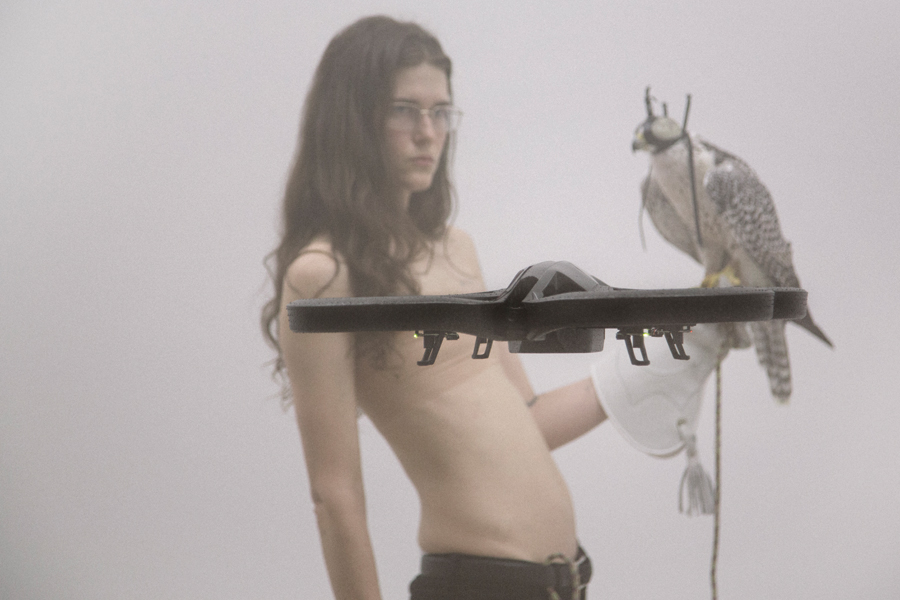
So, where’s backstage here: the place to hide, take the mask off, ‘be yourself’? There is none, of course. Despite the general cultural development towards the dialectics of gentrification and expulsion, there is no longer anywhere to hide, no real ‘backstage’ to the performances of everyday life. We know that we are all ‘performing’, always – with our friends, at home, at work – though the stage is not often visible. This destaging, this establishment of a place without ‘place’, is all about the drama of macro changes in human relations. From the snark and vitriol of online comments to the simple uncertainty of how we work, often seemingly for no remuneration, in an economy in which labour is ‘shared’ and mobile, and thus seemingly omnipresent, our world is nonetheless one where young people, although ‘mobile’, are not getting anywhere at all.
Anne Imhof is an artist based in Frankfurt, Germany. She was the 2015 recipient of Berlin’s National Gallery Prize for Young Art. Recent solo exhibitions include: ‘Angst’ (Kunsthalle Basel, Switzerland), ‘Angst II’ (Hamburger Bahnhof, Berlin, Germany, ‘Overture’, Galerie Buchholz, Cologne, Germany (all 2016), and ‘Deal’, MoMA PS1, New York, USA (2015). Angst III is currently included in the Biennale de Montréal, Canada. In 2017, she will have a solo presentation at Galerie Isabella Bortolozzi, Berlin.









